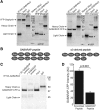Nitric Oxide Signaling Strengthens Inhibitory Synapses of Cerebellar Molecular Layer Interneurons through a GABARAP-Dependent Mechanism
- PMID: 32169968
- PMCID: PMC7178912
- DOI: 10.1523/JNEUROSCI.2211-19.2020
Nitric Oxide Signaling Strengthens Inhibitory Synapses of Cerebellar Molecular Layer Interneurons through a GABARAP-Dependent Mechanism
Abstract
Nitric oxide (NO) is an important signaling molecule that fulfills diverse functional roles as a neurotransmitter or diffusible second messenger in the developing and adult CNS. Although the impact of NO on different behaviors such as movement, sleep, learning, and memory has been well documented, the identity of its molecular and cellular targets is still an area of ongoing investigation. Here, we identify a novel role for NO in strengthening inhibitory GABAA receptor-mediated transmission in molecular layer interneurons of the mouse cerebellum. NO levels are elevated by the activity of neuronal NO synthase (nNOS) following Ca2+ entry through extrasynaptic NMDA-type ionotropic glutamate receptors (NMDARs). NO activates protein kinase G with the subsequent production of cGMP, which prompts the stimulation of NADPH oxidase and protein kinase C (PKC). The activation of PKC promotes the selective strengthening of α3-containing GABAARs synapses through a GΑΒΑ receptor-associated protein-dependent mechanism. Given the widespread but cell type-specific expression of the NMDAR/nNOS complex in the mammalian brain, our data suggest that NMDARs may uniquely strengthen inhibitory GABAergic transmission in these cells through a novel NO-mediated pathway.SIGNIFICANCE STATEMENT Long-term changes in the efficacy of GABAergic transmission is mediated by multiple presynaptic and postsynaptic mechanisms. A prominent pathway involves crosstalk between excitatory and inhibitory synapses whereby Ca2+-entering through postsynaptic NMDARs promotes the recruitment and strengthening of GABAA receptor synapses via Ca2+/calmodulin-dependent protein kinase II. Although Ca2+ transport by NMDARs is also tightly coupled to nNOS activity and NO production, it has yet to be determined whether this pathway affects inhibitory synapses. Here, we show that activation of NMDARs trigger a NO-dependent pathway that strengthens inhibitory GABAergic synapses of cerebellar molecular layer interneurons. Given the widespread expression of NMDARs and nNOS in the mammalian brain, we speculate that NO control of GABAergic synapse efficacy may be more widespread than has been appreciated.
Keywords: GABA receptor; GABARAP; cerebellum; electrophysiology; inhibitory synapse; plasticity.
Copyright © 2020 the authors.
Figures








Similar articles
-
NMDA receptor activation enhances inhibitory GABAergic transmission onto hippocampal pyramidal neurons via presynaptic and postsynaptic mechanisms.J Neurophysiol. 2011 Jun;105(6):2897-906. doi: 10.1152/jn.00287.2010. Epub 2011 Apr 6. J Neurophysiol. 2011. PMID: 21471392
-
Activity-dependent recruitment of extrasynaptic NMDA receptor activation at an AMPA receptor-only synapse.J Neurosci. 2002 Jun 1;22(11):4428-36. doi: 10.1523/JNEUROSCI.22-11-04428.2002. J Neurosci. 2002. PMID: 12040050 Free PMC article.
-
Pre- and postsynaptic inhibition mediated by GABA(B) receptors in cerebellar inhibitory interneurons.J Neurophysiol. 2002 Jan;87(1):183-90. doi: 10.1152/jn.00344.2001. J Neurophysiol. 2002. PMID: 11784741
-
Presynaptic NMDA Receptors.In: Van Dongen AM, editor. Biology of the NMDA Receptor. Boca Raton (FL): CRC Press/Taylor & Francis; 2009. Chapter 14. In: Van Dongen AM, editor. Biology of the NMDA Receptor. Boca Raton (FL): CRC Press/Taylor & Francis; 2009. Chapter 14. PMID: 21204409 Free Books & Documents. Review.
-
Regulation and functional roles of rebound potentiation at cerebellar stellate cell-Purkinje cell synapses.Front Cell Neurosci. 2014 Feb 18;8:42. doi: 10.3389/fncel.2014.00042. eCollection 2014. Front Cell Neurosci. 2014. PMID: 24600347 Free PMC article. Review.
Cited by
-
Involvement of the GABAergic and the serotonergic systems in the anxiolytic effects expressed by the nitric oxide (NO) donor sodium nitroprusside (SNP) in the male rat.Psychopharmacology (Berl). 2025 Apr;242(4):793-801. doi: 10.1007/s00213-025-06759-1. Epub 2025 Feb 18. Psychopharmacology (Berl). 2025. PMID: 39964469 Free PMC article.
-
A new perspective on the autophagic and non-autophagic functions of the GABARAP protein family: a potential therapeutic target for human diseases.Mol Cell Biochem. 2024 Jun;479(6):1415-1441. doi: 10.1007/s11010-023-04800-5. Epub 2023 Jul 13. Mol Cell Biochem. 2024. PMID: 37440122 Review.
References
Publication types
MeSH terms
Substances
Grants and funding
LinkOut - more resources
Full Text Sources
Molecular Biology Databases
Miscellaneous
